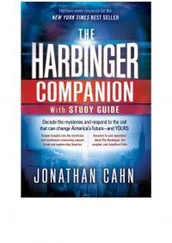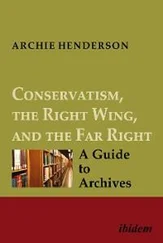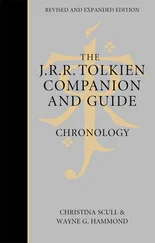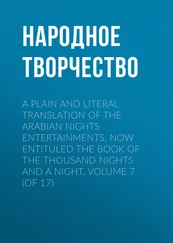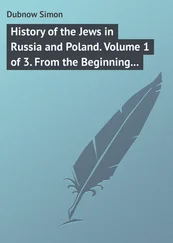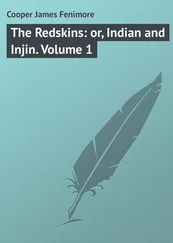Although the most private of Tolkien’s surviving papers remain private, a great deal else has been open to us, published and unpublished. These papers have been useful not only in adding to our knowledge of J.R.R. Tolkien, but in verifying details previously accepted as fact. We found, for instance, in assembling information for 1952 that there was no possible opportunity for Tolkien to travel to Kerry in Ireland that year, as authorities (even ourselves) previously reported. This led, as we investigated further, to a vivid recollection by Tolkien’s daughter Priscilla that the visit was, rather, in 1951, and that she herself had been a participant.
Sometimes, however, evidence has been lacking, and even when present is not always complete or clear-cut. To give only a few examples: we can say that Tolkien attended particular meetings of the Inklings because the facts are mentioned, chiefly in letters by his friend C.S. Lewis, in diaries kept by Warren Lewis, and in letters that Tolkien wrote to his son Christopher. We can list which lectures he was scheduled to give as an Oxford professor, because they were announced prior to each term in the Oxford University Gazette . We know that he was present at certain meetings because minutes are preserved, chiefly in the Oxford University archives. But we know about only some of the holidays he took, from a handful of letters and dated paintings and drawings, and about only some of the society meetings and other events he attended (or could have attended) at King Edward’s School, Birmingham and at Oxford, through secretaries’ minutes, magazine reports, and printed timetables. On occasion, his Oxford lectures were cancelled or rescheduled, but a published announcement of that fact has not always come to our attention; and as for the lectures Tolkien gave at Leeds, such schedules of these that survive in the Leeds University archives name only their subjects, not the lecturers themselves, in consequence of which we have indicated only those lectures that Tolkien seems likely to have given (based partly on the statement he wrote when he applied for the Rawlinson and Bosworth Professorship of Anglo-Saxon at Oxford in 1925). We know as well that Tolkien marked School Certificate papers for many years, to augment his professor’s salary, and sometimes acted as an external university examiner, but these activities seem to be little documented.
We have also included in the Chronology references to some, but no more than a fraction, of the personal and professional correspondence that consumed another large portion of Tolkien’s time. He received many requests from colleagues for information, or comments on their ideas; requests from colleagues or former students for letters of reference when applying for academic positions; and requests from publishers for his opinion of books under consideration. He was often sent, in addition, offprints of scholarly papers and copies of books, most of which would have required at least an acknowledgement, if not reading and criticism: these amounted to hundreds of titles during his working life. And then, after the publication of The Hobbit and especially The Lord of the Rings , he received thousands of letters expressing appreciation, asking questions, or requesting his autograph. His publishers too were in frequent touch with him about various literary, financial, and legal matters. And all of this was in addition to letters he wrote to and received from his family and intimate friends.
Tolkien’s correspondence with his publisher George Allen & Unwin in particular has been of immense value to us. In many of his letters he writes of personal activities, of academic pressures, and of his or his family’s health, as well as about business at hand. These documents, however, became less frequent in his later years, reflecting increased face to face contact with publisher’s staff and use of the telephone.
Perhaps our greatest difficulty in writing the Chronology has been to decide where to place events which cannot be firmly dated, such as the emergence of the Inklings. Many of Tolkien’s works, moreover, can be placed only within a range of years, and only roughly in order of writing. In doing so, we have relied on internal as well as external evidence – on handwriting, paper, and typefaces, and on the state of development of the work in question. Where Christopher Tolkien as a result of his own extensive research into the history of his father’s writings has been able to group works in a sequential order, we have placed the grouping at the start of the relevant time span, rather than insert the writings in question arbitrarily into the Chronology . We have also made use of dates of composition inscribed by Tolkien on his writings and art, keeping in mind that some of these were added after the fact, sometimes many years later, and that memory can err; but statements by the creator of a work can hold significant weight. In a few instances there is conflicting evidence for dates, most notably for the origin and writing of The Hobbit , and in such cases we have made multiple entries in the Chronology , with cross-references, and have discussed the matter at greater length in the second part of the Companion and Guide .
That part, which we have called the Reader’s Guide , comprises in the course of two volumes a ‘What’s What’, a ‘Where’s Where’, and a ‘Who’s Who’ of Tolkien, arranged in alphabetical order and in a single sequence. It includes, as appropriate, articles or brief entries on:
 Tolkien’s academic writings and his works of poetry and prose fiction, with summaries, concise backgrounds or histories, brief surveys of reviews and criticism (in so far as these exist), and miscellaneous commentary. Separate articles are provided for published works; unpublished works are noted as appropriate in topical articles, or in articles on other, related works. We have written separate articles for those of Tolkien’s poems that are published in whole or in large part (i.e. more than a few lines), and are not integral with a larger literary work, e.g. the poems of The Hobbit or The Lord of the Rings , but have omitted separate entry for clerihews and for all but one of the songs ( The Root of the Boot , under The Stone Troll ) contributed by Tolkien to Songs for the Philologists . Also omitted are entries for letters sent by Tolkien to newspapers or journals.
Tolkien’s academic writings and his works of poetry and prose fiction, with summaries, concise backgrounds or histories, brief surveys of reviews and criticism (in so far as these exist), and miscellaneous commentary. Separate articles are provided for published works; unpublished works are noted as appropriate in topical articles, or in articles on other, related works. We have written separate articles for those of Tolkien’s poems that are published in whole or in large part (i.e. more than a few lines), and are not integral with a larger literary work, e.g. the poems of The Hobbit or The Lord of the Rings , but have omitted separate entry for clerihews and for all but one of the songs ( The Root of the Boot , under The Stone Troll ) contributed by Tolkien to Songs for the Philologists . Also omitted are entries for letters sent by Tolkien to newspapers or journals.
 Key ideas in Tolkien’s writings, such as eucatastrophe and sub-creation , and general topics such as his religion, his views towards women, his invented languages and writing systems, his reading, and disputes over the American copyright of The Lord of the Rings .
Key ideas in Tolkien’s writings, such as eucatastrophe and sub-creation , and general topics such as his religion, his views towards women, his invented languages and writing systems, his reading, and disputes over the American copyright of The Lord of the Rings .
 Places that Tolkien lived, worked, or visited, the colleges and universities with which he was associated, pubs and bookshops he frequented, and so forth. It should be assumed by the reader that the places named in this book are in England unless otherwise stated, that English counties are referred to generally according to the names and boundaries that existed in Tolkien’s lifetime (before the reorganization of local governments in the later twentieth century), and that while coverage is full, it is not exhaustive: we have not attempted to list every place in which Tolkien set foot. Nor have we attempted to account for every claim by towns and regions (in Britain and elsewhere) to Tolkien’s presence, or as an inspiration for The Lord of the Rings , put forth with the rise in his popularity: some of these are exaggerated, others dubious at best. In all cases we have preferred to rely on documentary evidence such as letters, guest books, and diaries, rather than on assumptions and reported ‘tradition’. It should be noted also that while some of the places described in this book are open to the public, others are not. Readers therefore who wish to follow in Tolkien’s footsteps should take care not to trespass on private property, including college grounds when not open to visitors.
Places that Tolkien lived, worked, or visited, the colleges and universities with which he was associated, pubs and bookshops he frequented, and so forth. It should be assumed by the reader that the places named in this book are in England unless otherwise stated, that English counties are referred to generally according to the names and boundaries that existed in Tolkien’s lifetime (before the reorganization of local governments in the later twentieth century), and that while coverage is full, it is not exhaustive: we have not attempted to list every place in which Tolkien set foot. Nor have we attempted to account for every claim by towns and regions (in Britain and elsewhere) to Tolkien’s presence, or as an inspiration for The Lord of the Rings , put forth with the rise in his popularity: some of these are exaggerated, others dubious at best. In all cases we have preferred to rely on documentary evidence such as letters, guest books, and diaries, rather than on assumptions and reported ‘tradition’. It should be noted also that while some of the places described in this book are open to the public, others are not. Readers therefore who wish to follow in Tolkien’s footsteps should take care not to trespass on private property, including college grounds when not open to visitors.
Читать дальше
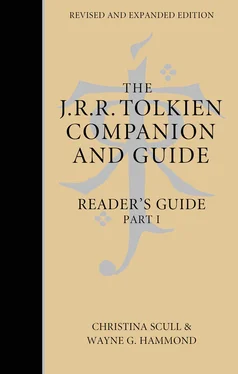
 Tolkien’s academic writings and his works of poetry and prose fiction, with summaries, concise backgrounds or histories, brief surveys of reviews and criticism (in so far as these exist), and miscellaneous commentary. Separate articles are provided for published works; unpublished works are noted as appropriate in topical articles, or in articles on other, related works. We have written separate articles for those of Tolkien’s poems that are published in whole or in large part (i.e. more than a few lines), and are not integral with a larger literary work, e.g. the poems of The Hobbit or The Lord of the Rings , but have omitted separate entry for clerihews and for all but one of the songs ( The Root of the Boot , under The Stone Troll ) contributed by Tolkien to Songs for the Philologists . Also omitted are entries for letters sent by Tolkien to newspapers or journals.
Tolkien’s academic writings and his works of poetry and prose fiction, with summaries, concise backgrounds or histories, brief surveys of reviews and criticism (in so far as these exist), and miscellaneous commentary. Separate articles are provided for published works; unpublished works are noted as appropriate in topical articles, or in articles on other, related works. We have written separate articles for those of Tolkien’s poems that are published in whole or in large part (i.e. more than a few lines), and are not integral with a larger literary work, e.g. the poems of The Hobbit or The Lord of the Rings , but have omitted separate entry for clerihews and for all but one of the songs ( The Root of the Boot , under The Stone Troll ) contributed by Tolkien to Songs for the Philologists . Also omitted are entries for letters sent by Tolkien to newspapers or journals.